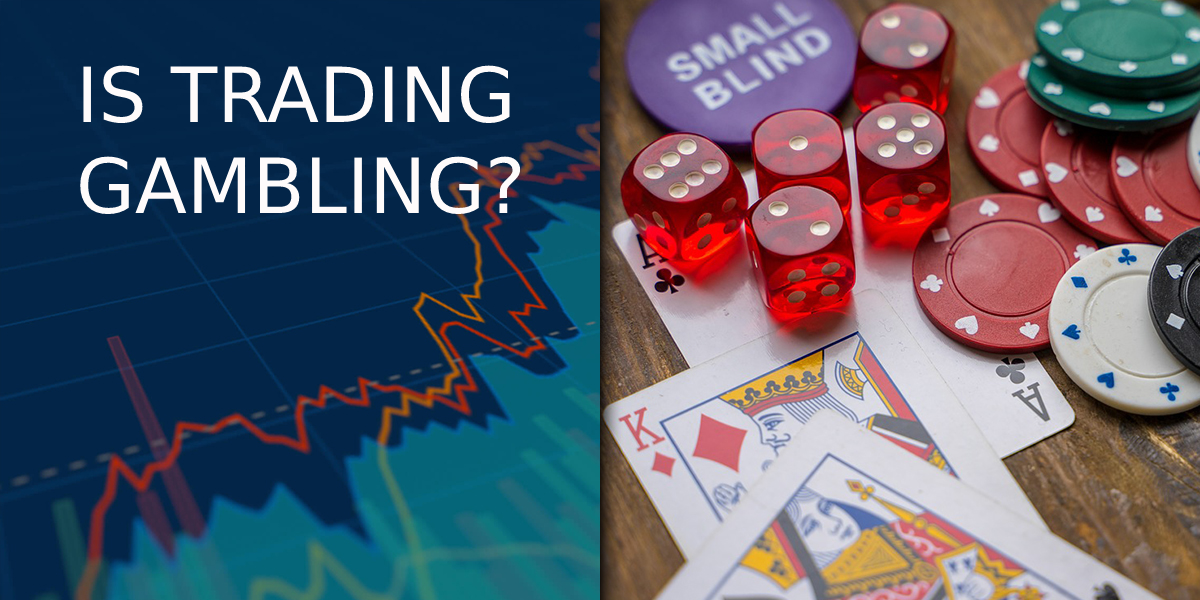In the realm of financial markets, a hotly debated question persists: is trading a form of gambling?
This article delves into the intricacies of this ongoing discourse MMC996 Malaysia, aiming to provide a nuanced analysis for the power-seeking audience.
By examining the skill versus luck debate, analyzing market trends, exploring risk management strategies, and considering the role of probability, this article seeks to shed light on the complex nature of trading and offer insights into the factors that influence its outcomes.

The Skill Vs. Luck Debate
The ongoing debate regarding the role of skill versus luck in trading has garnered significant attention in the financial industry. Traders and investors alike grapple with the question of whether successful trading is a result of skill or simply chance. While luck may play a role in individual trades https://www.mmc66.net/my/en-us/, it is the consistent application of skill that ultimately determines long-term success in the markets.
The psychology of trading also comes into play when considering skill versus chance. Skilled traders are able to manage their emotions and make rational decisions based on analysis and research. They understand the importance of risk management and employ strategies that minimize potential losses. On the other hand, relying solely on luck can lead to impulsive and emotionally-driven decisions that are not based on sound analysis.
It is important to note that luck can sometimes mask the lack of skill in trading. In certain market conditions, even inexperienced traders may experience short-term success due to favorable market movements. However, relying on luck alone is not a sustainable strategy for long-term profitability.
Analyzing Market Trends
Analyzing market trends allows investors to gain insights into potential opportunities and make strategic decisions based on data-driven analysis. By analyzing patterns and using technical indicators, investors can identify trends, predict price movements, and make informed trading decisions.
When analyzing market trends, investors often look for patterns and trends in price charts. These patterns can provide valuable insights into market behavior and potential future price movements. Common patterns include support and resistance levels, trend lines, and chart patterns such as head and shoulders or triangles. By identifying these patterns, investors can anticipate potential market movements and adjust their trading strategies accordingly.
In addition to analyzing patterns, investors also use technical indicators to gain further insights into market trends. Technical indicators are mathematical calculations based on historical price and volume data. They help investors identify overbought or oversold conditions, momentum, and trend strength. Popular technical indicators include moving averages, relative strength index (RSI), and stochastic oscillators.
Overall, analyzing market trends through the use of patterns and technical indicators provides investors with a systematic and data-driven approach to trading. By incorporating these analytical tools into their decision-making process, investors can increase their chances of success and make more strategic and informed trading decisions.
Risk Management Strategies
Implementing effective risk management strategies is crucial for investors to protect their capital and minimize potential losses in the dynamic and volatile market environment.
Two key components of risk management are position sizing and stop loss orders.
Position sizing refers to the process of determining the appropriate amount of capital to allocate to each trade. This is done by considering factors such as risk tolerance, market conditions, and the potential for gain or loss. By properly sizing positions, investors can ensure that no single trade has the potential to significantly impact their overall portfolio.
Stop loss orders, on the other hand, are orders placed with a broker to automatically sell a security if it reaches a predetermined price. This helps investors limit their losses by defining an exit point before entering a trade. Stop loss orders are particularly useful in volatile markets where prices can fluctuate rapidly.
Incorporating both position sizing and stop loss orders into a risk management strategy provides investors with a disciplined approach to trading. It helps them maintain control over their capital and reduces the impact of emotional decision-making.

Emotional Factors in Trading
Emotional factors can significantly influence an investor’s decision-making process, potentially leading to irrational and impulsive trading behavior. Psychological biases play a crucial role in shaping these emotional factors. As human beings, we are prone to biases that can cloud our judgment and impact our ability to make rational decisions. These biases include overconfidence, loss aversion, and the herd mentality, among others.
Controlling emotions is essential for successful trading. Investors need to develop the ability to detach themselves from their emotions and make decisions based on logic and analysis. This requires self-awareness and discipline. By understanding their psychological biases, investors can take steps to counteract their influence.
One effective strategy for controlling emotions is to have a well-defined trading plan. This plan should outline specific entry and exit points, as well as risk management strategies. Following this plan can help investors stick to their decisions and avoid impulsive trading based on emotions.
Additionally, investors should educate themselves about the psychological biases that commonly affect traders. By recognizing these biases, investors can consciously make an effort to overcome them. Seeking professional guidance or joining trading communities can also provide support and accountability.
The Role of Probability in Trading
Probability plays a crucial role in investment decision-making, as it allows traders to assess the likelihood of different outcomes and make informed choices based on statistical analysis. In the world of trading, where uncertainty and risk are inherent, understanding and utilizing probability can give traders a competitive edge. By employing quantitative analysis techniques and incorporating behavioral finance insights, traders can gain a deeper understanding of market trends and potential outcomes.
Quantitative analysis techniques involve the use of mathematical and statistical models to analyze market data and identify patterns and trends. These techniques help traders to quantify risk and return, and assess the probability of achieving desired outcomes. By analyzing historical data and market trends, traders can make more informed decisions regarding their investments.
In addition to quantitative analysis, understanding behavioral finance insights is also crucial for traders. Behavioral finance combines elements of psychology and economics to study how human behavior influences financial decisions. By understanding the biases and emotions that can impact decision-making, traders can better manage their own biases and make more rational choices.
Conclusion
In conclusion, trading can be seen as a combination of skill and luck.
While market trends and risk management strategies can be analyzed to make informed decisions, emotional factors and the role of probability also play significant roles.
It is important for traders to understand and manage these factors in order to increase their chances of success.



